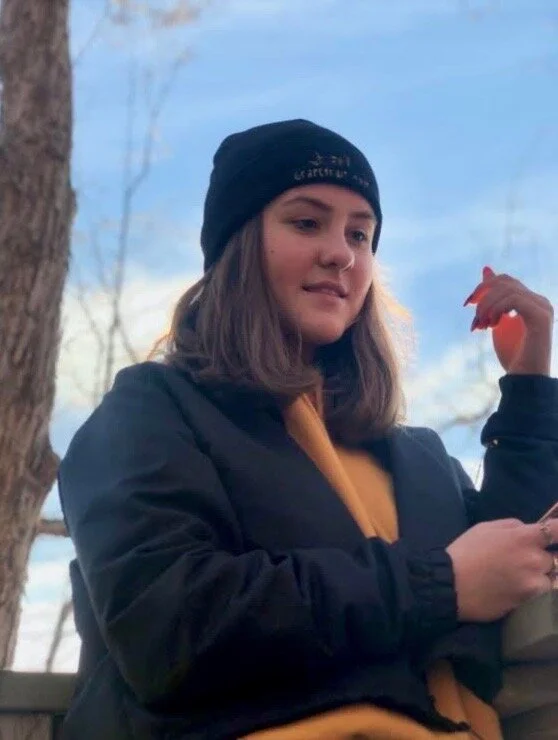Moving the Needle Virtual Gallery
Permission is required to reproduce any part of this publication.
This arts-based cohort convened young creatives in order to explore the questions, "Where are we now?" "Where do we want to go?" and "How do we get there?" in regards to climate action and a low-carbon economy. Explore the virtual gallery below to meet the artists, see their pieces, and gain insight into how their art came together and what they represent.
We recognize that art is not always an accessible entry-point, and because of this, the last photo in each artist gallery provides guiding questions for viewers to reflect on the work.
To read about the Moving The Needle Cohort, visit the program page at youthclimatelab.org
Clodagh Kells
Title: Coin Toss
Medium: Acrylic on Denim
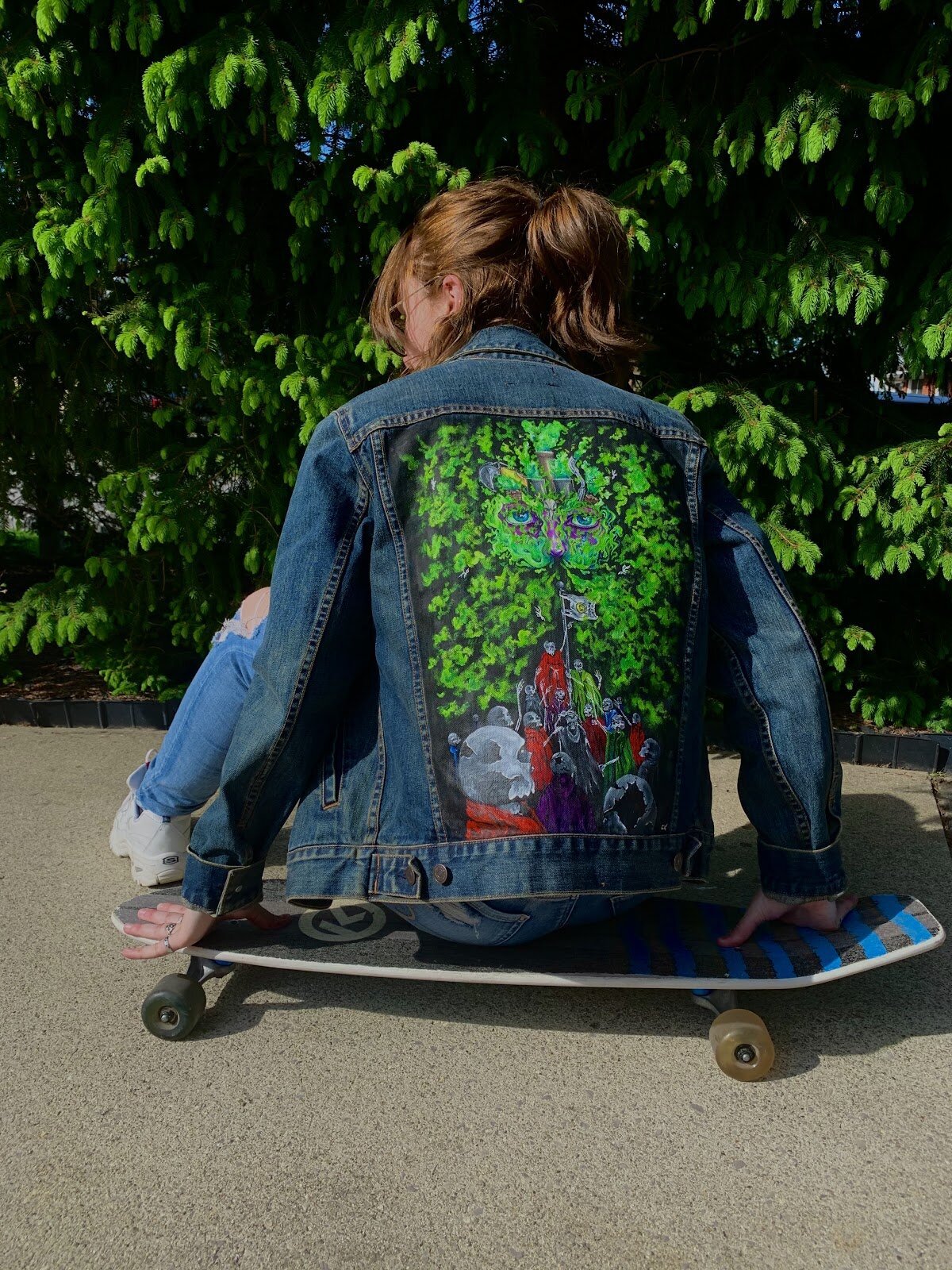
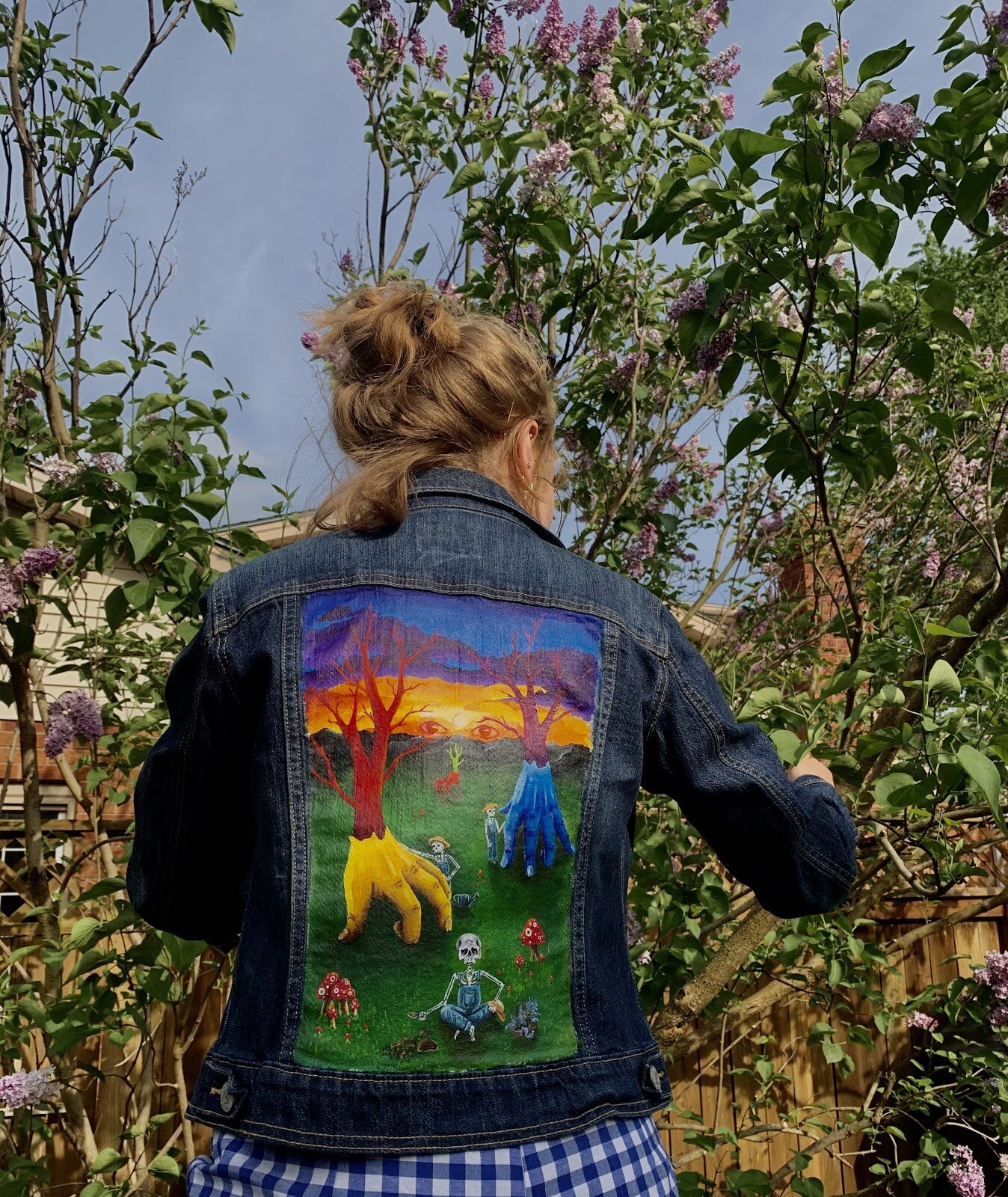
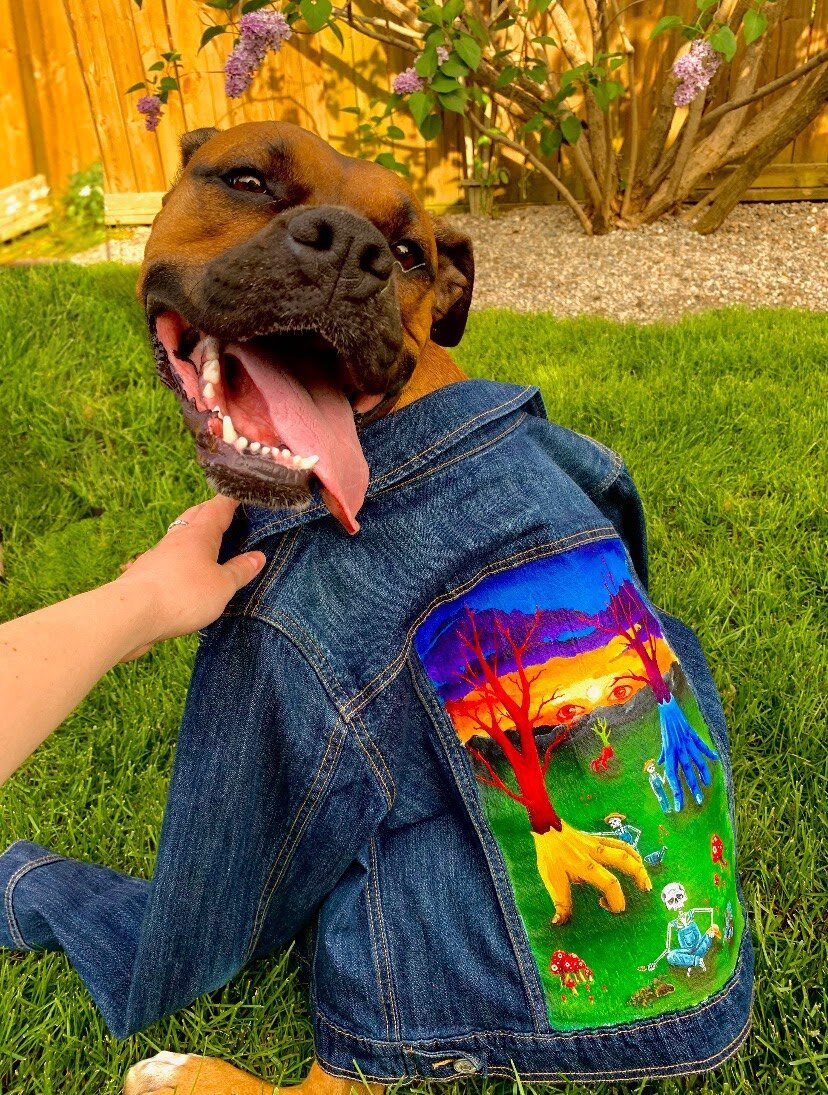

ARTIST STATEMENT
I've always been interested in the concept of combining my art with my clothing. On topics such as mental health or environmental issues, I like to seize every opportunity to create something with the intent to make a positive change and get people to think about perspectives they may not have previously considered. I love painting jackets and making other alterations because it allows me to avoid the environmental issues caused by fast fashion and to have my own one-of-a-kind pieces that serve as a walking canvas.
With my two pieces for this campaign, I wanted to show a contrast between what we are slowly moving towards versus what happens if we fail to take more urgent action. I used the eyes as a main focal point to tie the two pieces together; in one, the eyes hold a look of exhaustion, contrasting with a peacefulness coming from a balance in nature. I wanted to continue that relationship in the portrayal of skeletons in each piece, with symbolism of fused human anatomy and nature to represent negotiation, in contrast with the other, focused on climbing to the top in a consumerism driven society. There is no one singular way to fight climate change, but rather, several actions at varying scales. I believe that it’s important to find changes we can implement in our day-to-day lives to normalize being climate-minded, and because they can help move the needle on our carbon footprints.
ABOUT THE ARTIST
Clodagh Kells is a student at the University of Western Ontario majoring in geology and biology. Upon her graduation, she hopes to develop research-oriented strategies in implementing environmental solutions. Clodagh continues to explore how art may play a role in her life, and has participated in numerous art shows within her community, hosted her own art show, and been featured in ‘Sarnia this Week’. In her freelance career, she has produced custom pieces on everyday items including skateboards, phone cases, shirts, and jackets. Clodagh believes that how we style ourselves is a key form of our expression, and enjoys using fashion as a walking canvas. She also likes to experiment with other mediums, such as oil and acrylic paints, sculpture, mixed media, digital illustration, embroidery, and drawing. Clodagh’s style can sometimes come off as a bit grim, but she enjoys combining delicate imagery with visually striking gothic imagery to create balanced compositions centered in storytelling.
MONIKA RUMBOLT
Title: “Atak” (means “Connected” in Inuktitut; Labrador dialect) / 2020
Medium: Acrylic Painting / Woodland Style (Anishnabe Painting)
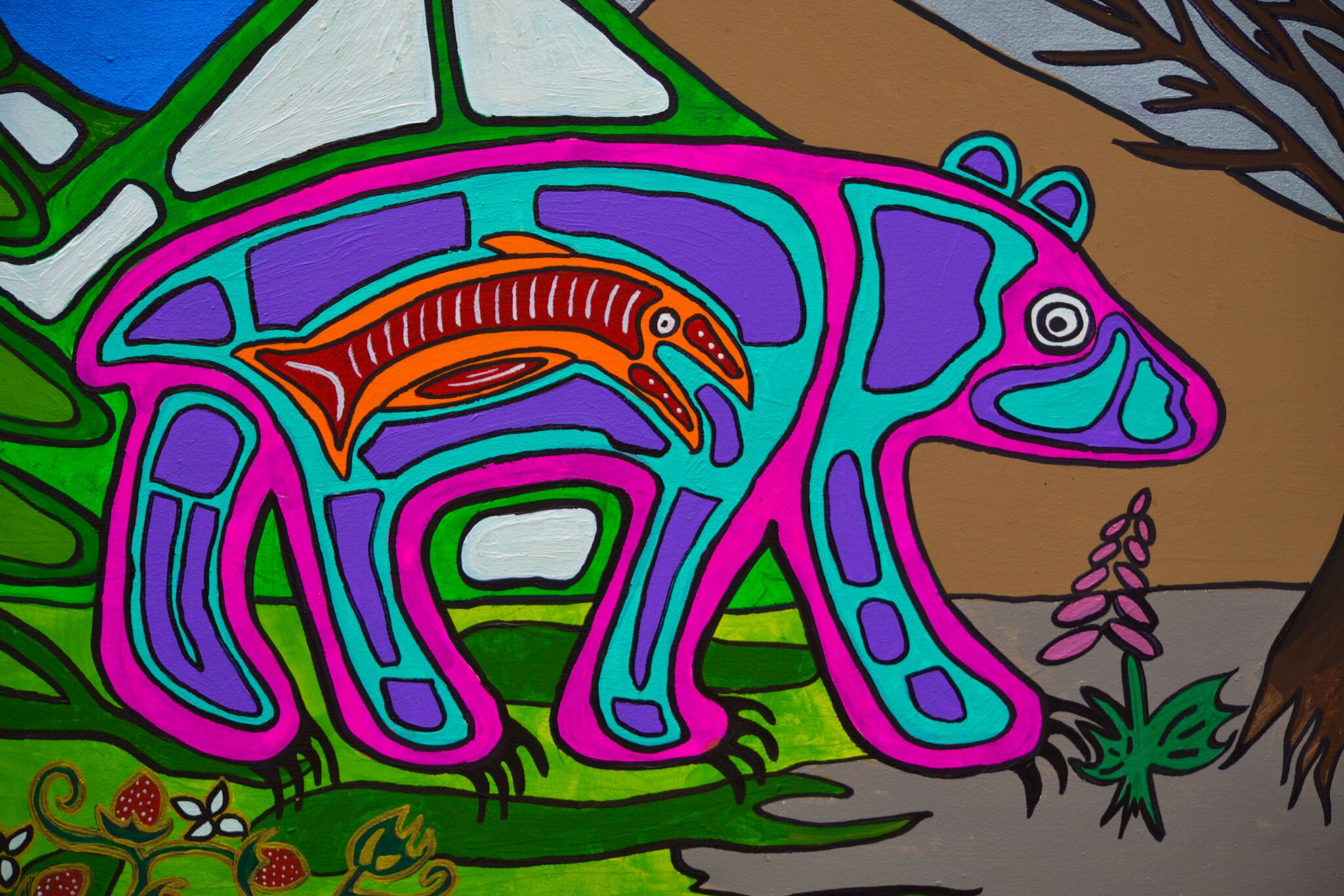
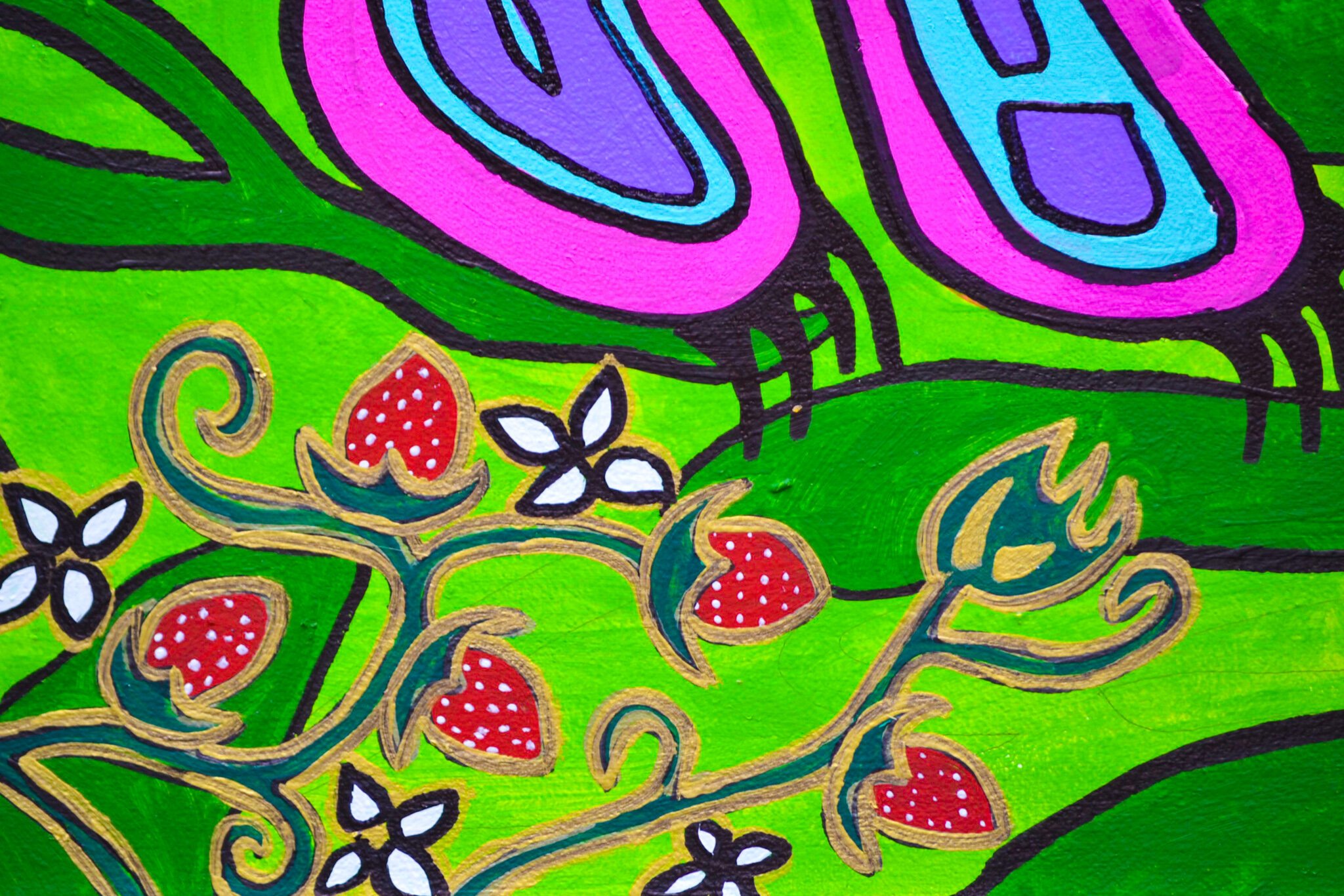
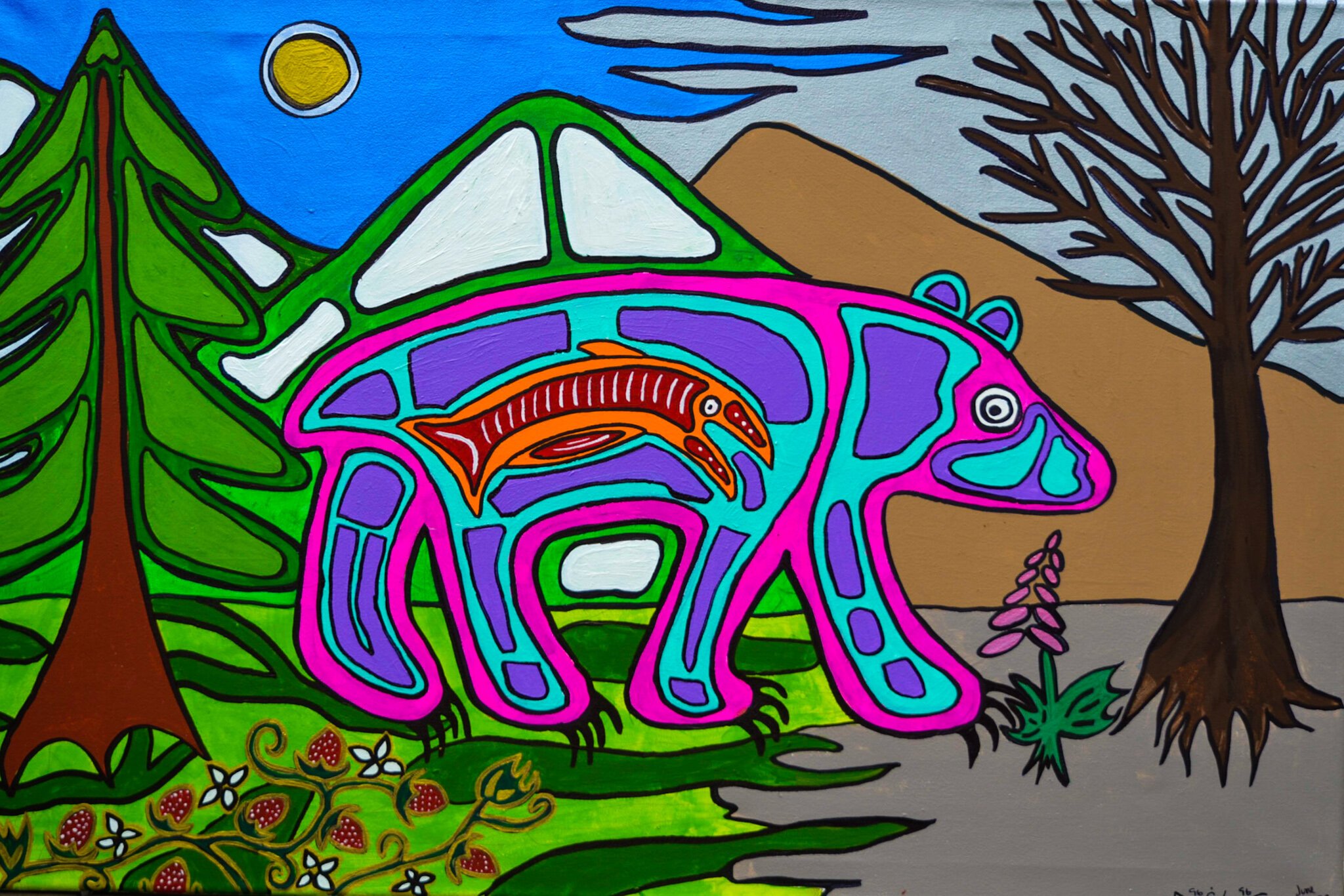

ARTIST STATEMENT
I choose the woodland art style because it is traditionally used when telling a story or legend. The story portrays how Indigenous people in Canada are adapting to climate change, and where they stand in advocating against it. The common element throughout the painting is how everything in nature is intertwined, and what affects one, will eventually effect the other. By using generations of land-based knowledge; for example changing ice conditions, invasive species, and changing land patterns, are just some of the observations that Indigenous groups have been noticing while engaging in traditional land practices for generations.
This work has a very personal connection with me, as an Inuk living in an isolated northern community, the effects of climate change are an everyday reality. As previously mentioned, changing ice conditions and retreating permafrost have created a dangerous situation for hunters and travelers, even claiming the lives of beloved family and community members. The people of the North are forced to take these risks based on the lack of food security and the financial burden of the high cost of living. They venture out onto the land to cut wood and harvest animals in the hopes to ease these burdens on their families and other “at risk” community members (i.e. Elders, single parents, people with disabilities).
It is by sharing these stories of lived experience with the Moving the Needle campaign, that I hope to demonstrate that climate change is a very active and rapidly progressing issue, not a “10 – 20 years from now” issue. Knowing and having land-based knowledge connects you to the issues first hand, and this experience helps unite us in recognizing the urgency for collective support with Indigenous groups and governments across the country. As allies, the number of resources and access to knowledge we have to tackle this issue, triples in size. Indigenous youth are now a driving force for change, and with the land being our lifeline to our culture, we will tirelessly work to protect it.
ABOUT THE ARTIST
Monika (Dee-Jay) Rumbolt is an Inuk visual artist from Labrador. Growing up on the coast, she had the privileged to be taught many traditional practices, and lived in harmony with the land she called home. During her youth she moved to central Labrador where she continued to learn about her culture, while engaging with other Indigenous people and their art forms. It was here she was inspired to start her journey as a traditional knowledge holder. After university, Monika began building the foundation for her tourism business, Alianait Designs, where she educates visitors about Indigenous culture within Labrador through crafting, painting, and storytelling. A majority of this is done out on the land, where visitors can gain a personal connection and understanding with the environment and how it works. As an artist, her notable achievements include being published in the Newfoundland Quarterly, as well as several published books. Right now, she is currently working on a book about traditional medicines and their uses in modern times.
CHRISTINA SU
Title: Urban Utopia, 2020
Medium: Virtual Reality (Google Tiltbrush) and Digital Illustrations
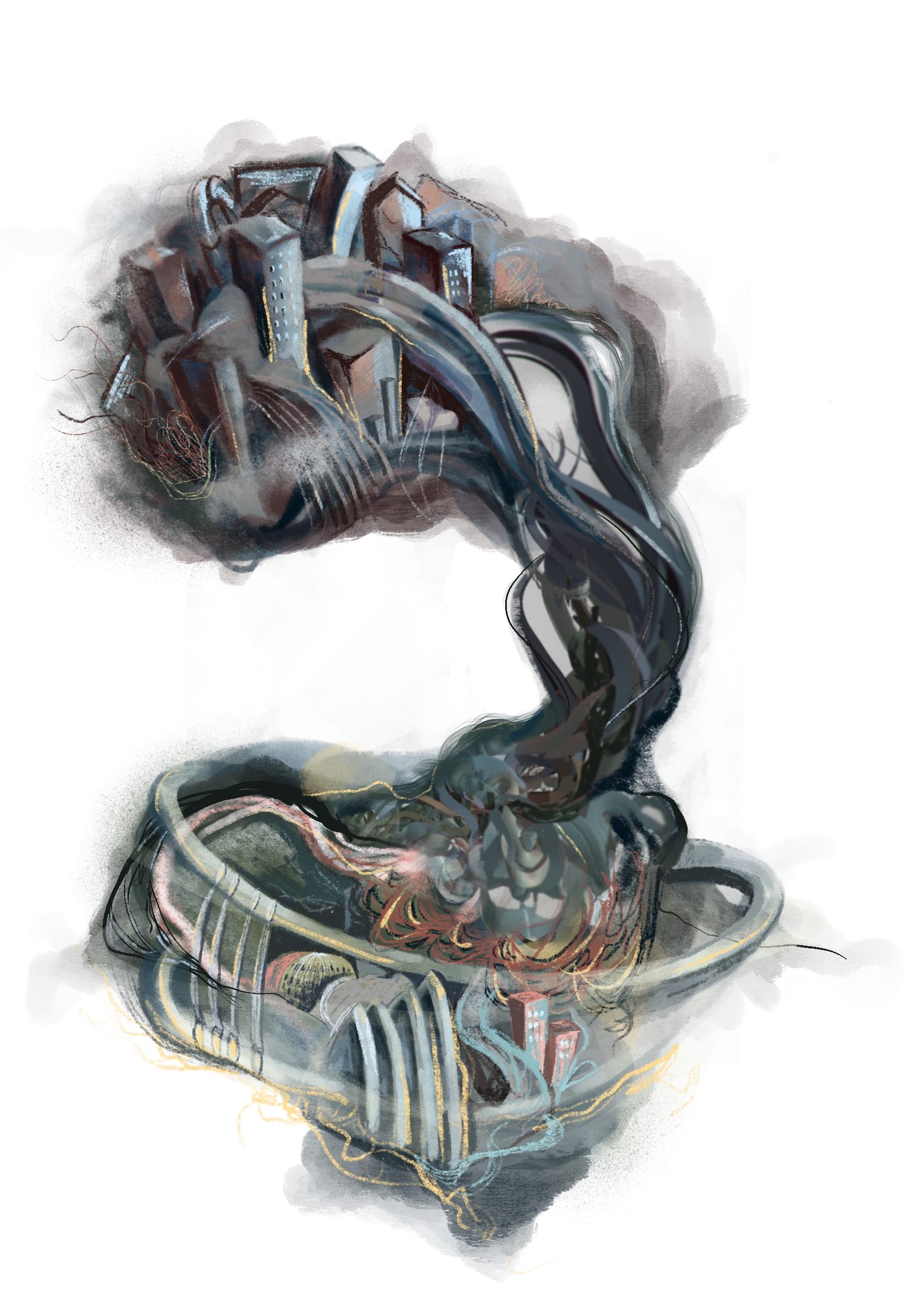
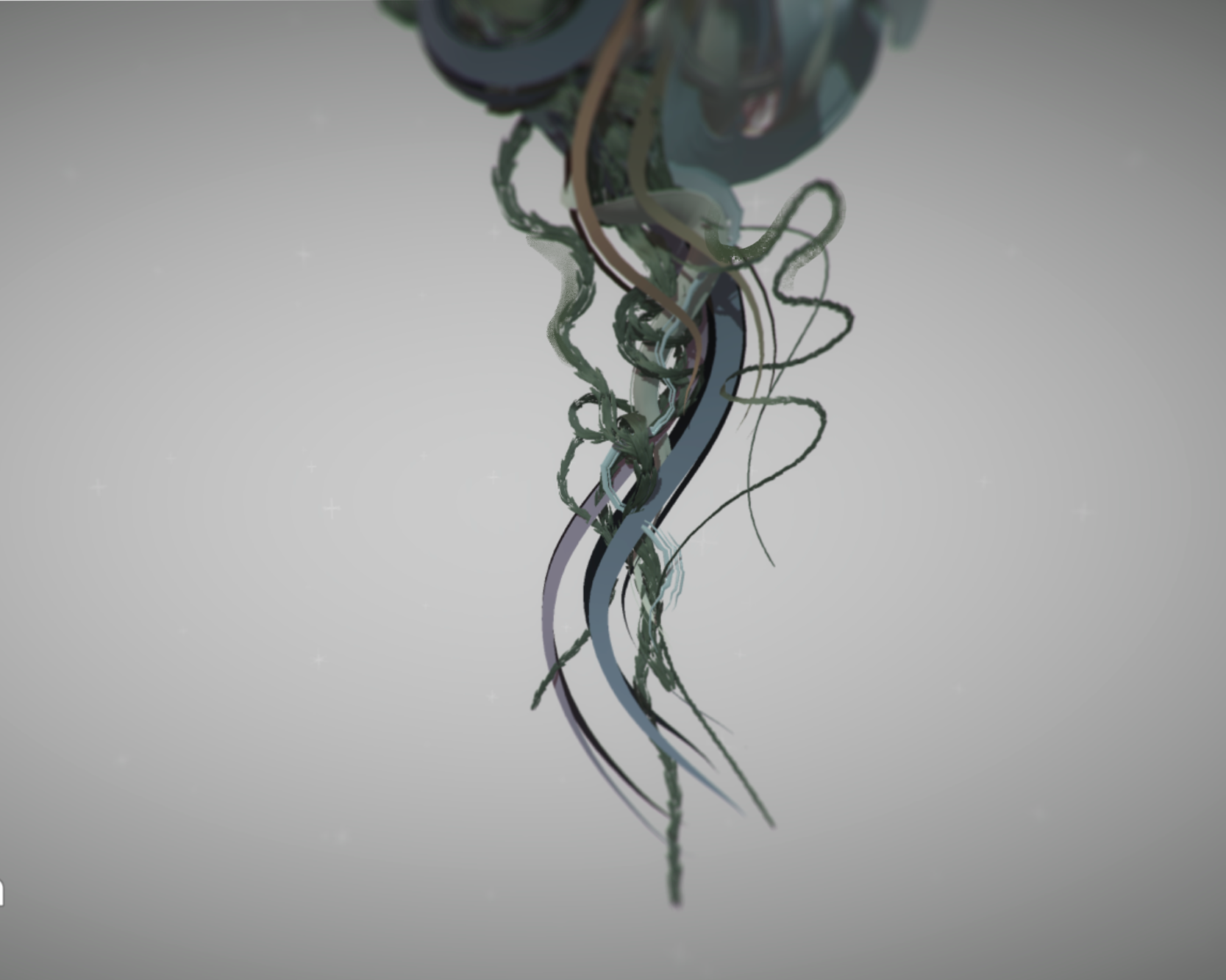
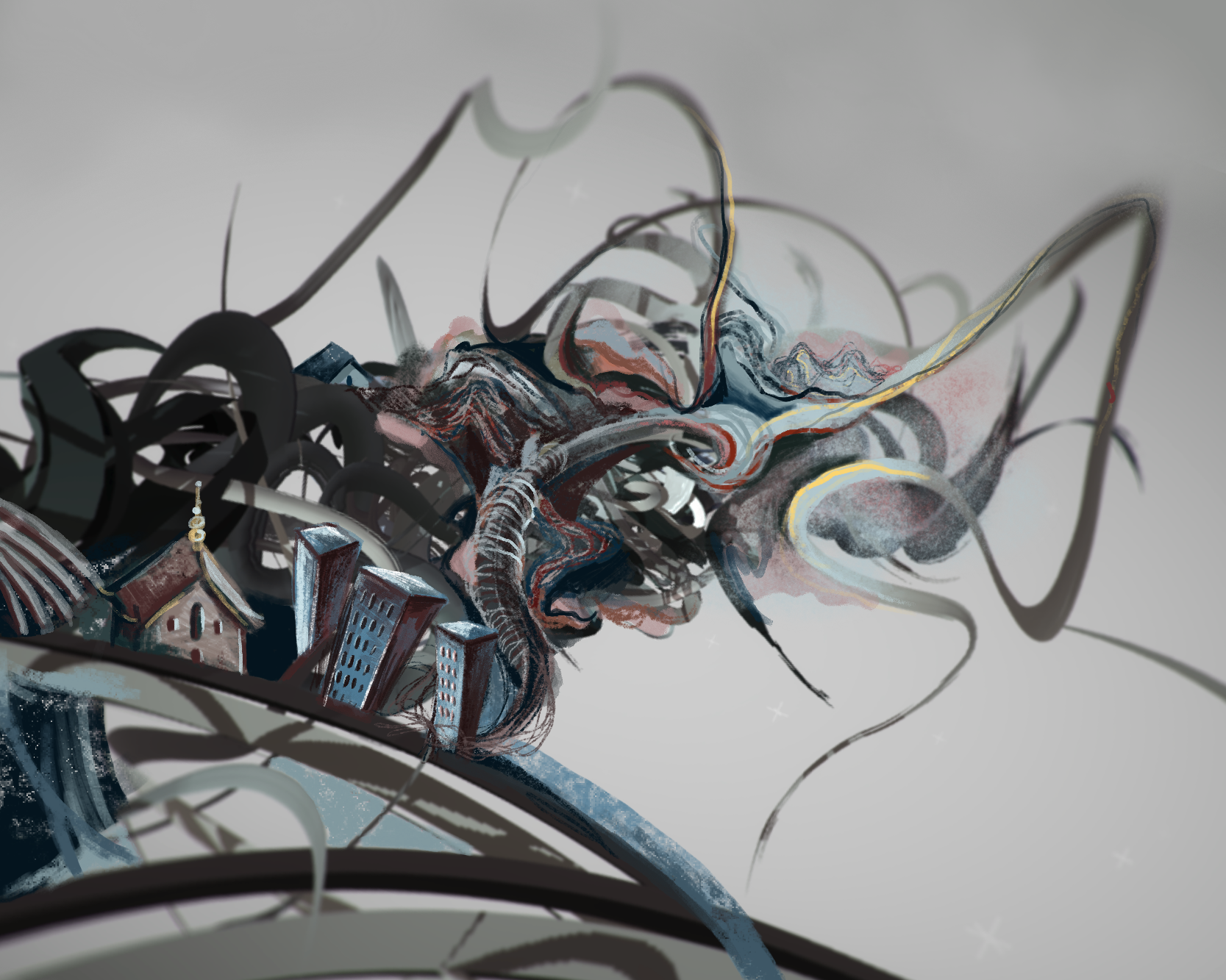
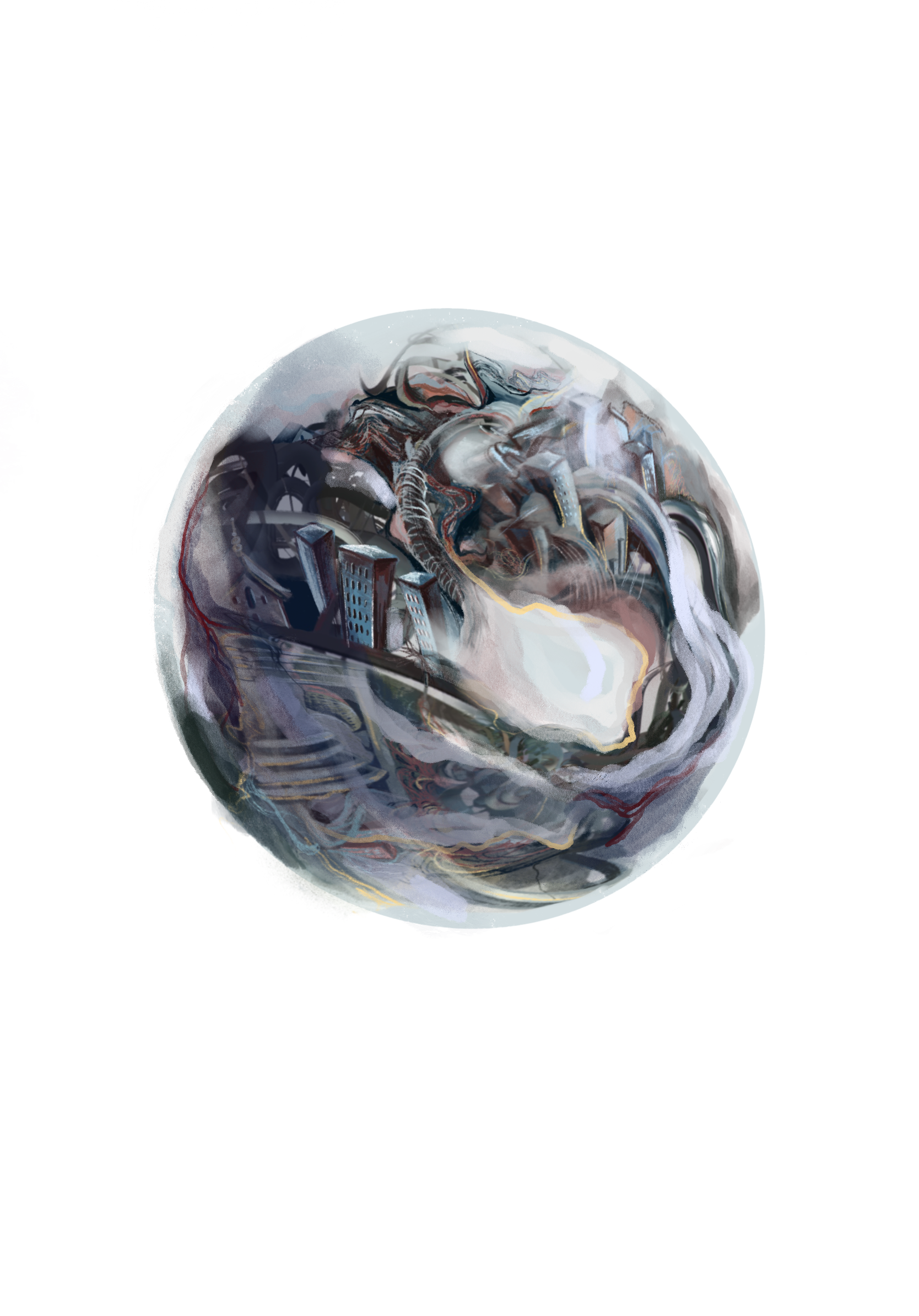

ARTIST STATEMENT
I have always found the effects of urban sprawl and global urbanization an intriguing subject, specifically how urbanization affects the relationship between architecture and nature. There are three separate stages of Urban Utopia. Initially, the tree-like structure depicts the beginnings of how nature can begin to merge and reform current cities and metropolises, balancing out otherwise artificial cityscapes. I then incorporated elements inspired by an animal vertebrate to serve as a reference on how we can learn from visually intriguing structures found in nature. Finally, I manipulated the same imagery from previous stages of the piece to create a sphere that resembles the Earth. With the previous images morphed into one, I hope to convey that there are no borders limiting the incorporation of these natural elements into our infrastructure; these sources of inspiration are applicable to any country or culture.
Many of us are prone to forget the value of co-existing alongside natural environments, be it parks, forests, or even the tiny vegetable patch in our backyard. We fail to see these environments as something beyond what benefits human transactions. There remain many unanswered questions about how we can adapt urban spaces to become more cohesive with greener environments; however, allow this piece to hopefully introduce a conversation on how we can begin designing these ideal structures that highlight the importance of these resources. Perhaps a new era of environmental design is on the rise. When we remove the human-centric focus on design, we unlock the different structures and patterns that exist independent of man-made creation to inspire a new lens of how nature informs human communities.
ABOUT THE ARTIST
Christina Su is a student currently based in Vancouver, Canada. While only a recent high school graduate, she has always been intrigued by expressing narratives through colour and graphics. Christina enjoys exploring the intersection of fine arts, graphic design, and technology in her creative pursuits, including drawing software in virtual reality. Though she dabbles in diverse subject matters, Christina’s work often focuses on intangible psychological themes or draws upon her heritage and lore for inspiration. In her practice, Christina enjoys considering the role of abstract imagery in igniting discussion and making space for conversations on complex, interconnected issues. In fall 2020, Christina will continue to investigate how visual art and technology can continue to move the needle on complex conversations in New York City, at Columbia University.
SYLVIE STOJANOVSKI
Title: This Place: Now, Then, Reimagined, 2020
Medium: Mixed Media; Found Objects and Photographs of the Bendale neighbourhood, String, Watercolour Paint, Acrylic Paint, Markers, Pencil Crayons, and Digi-manipulation
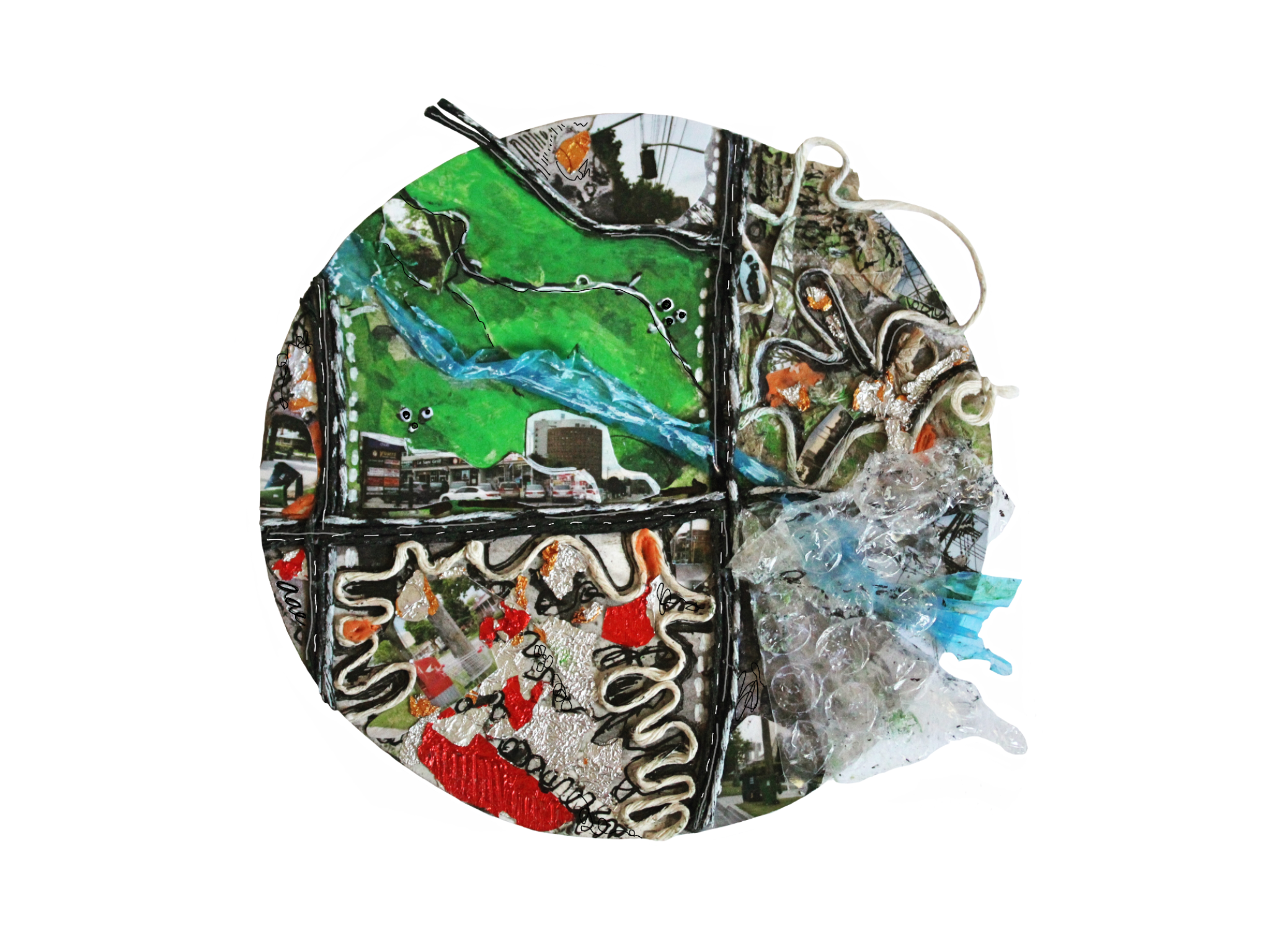
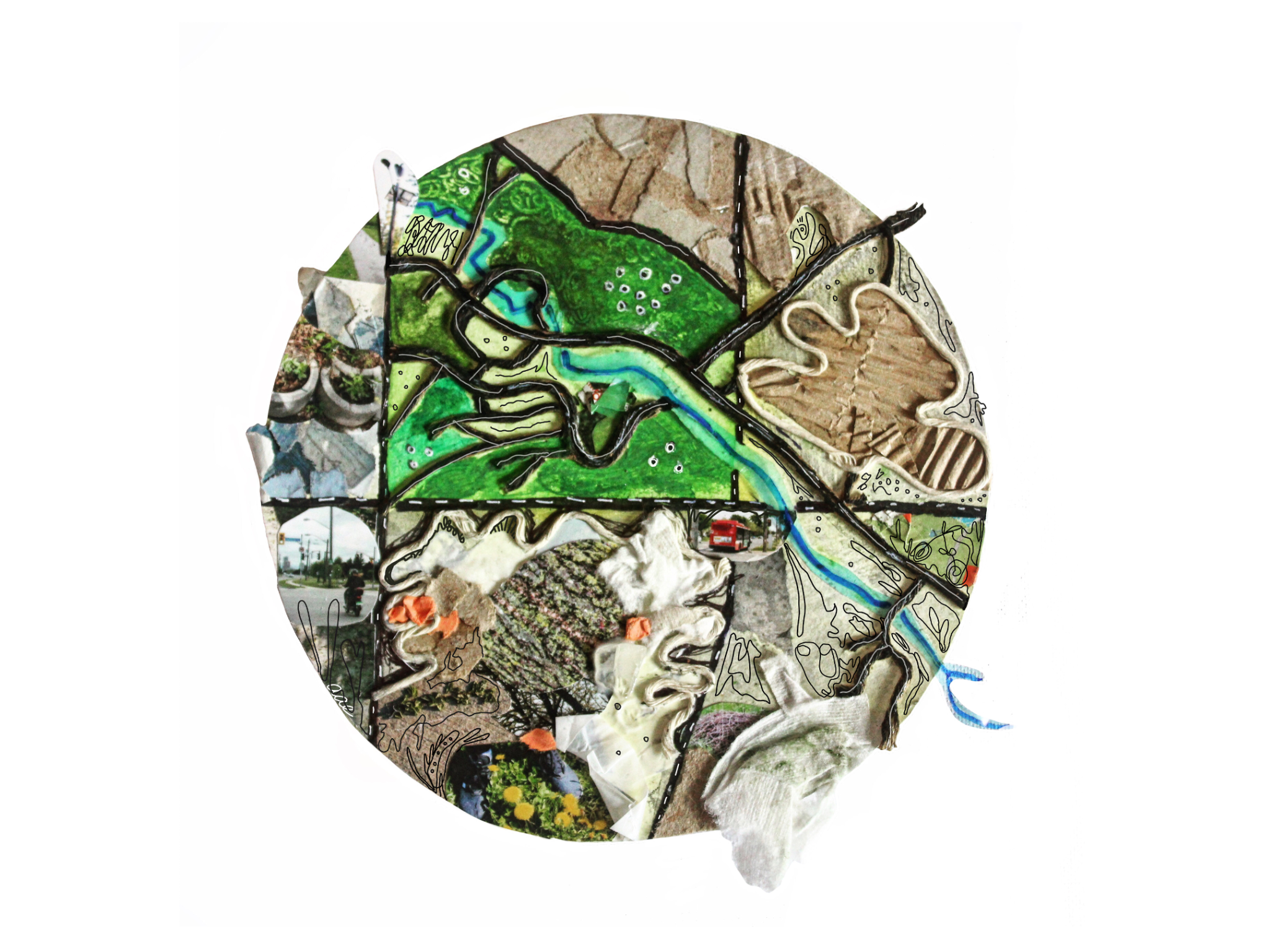
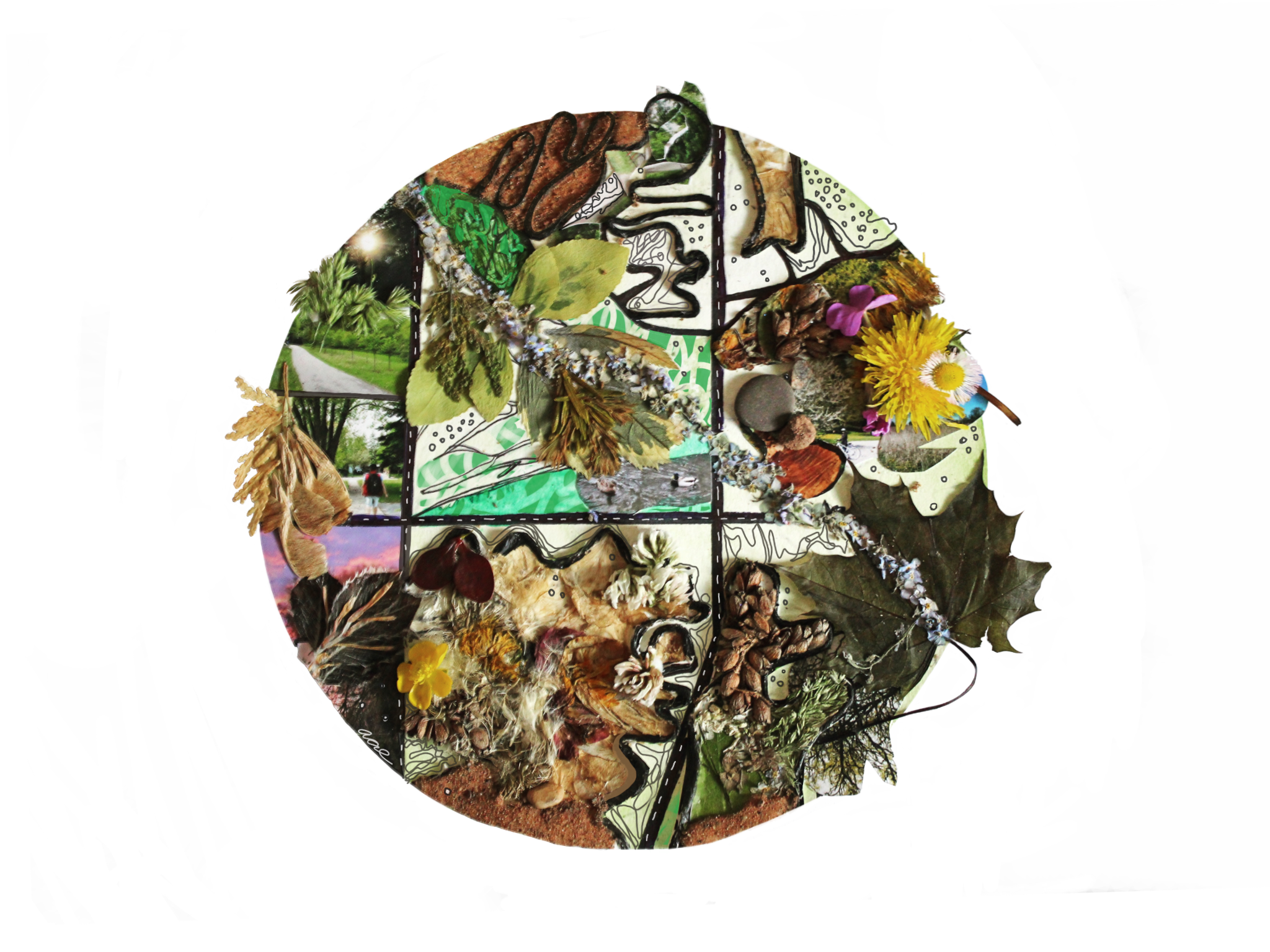
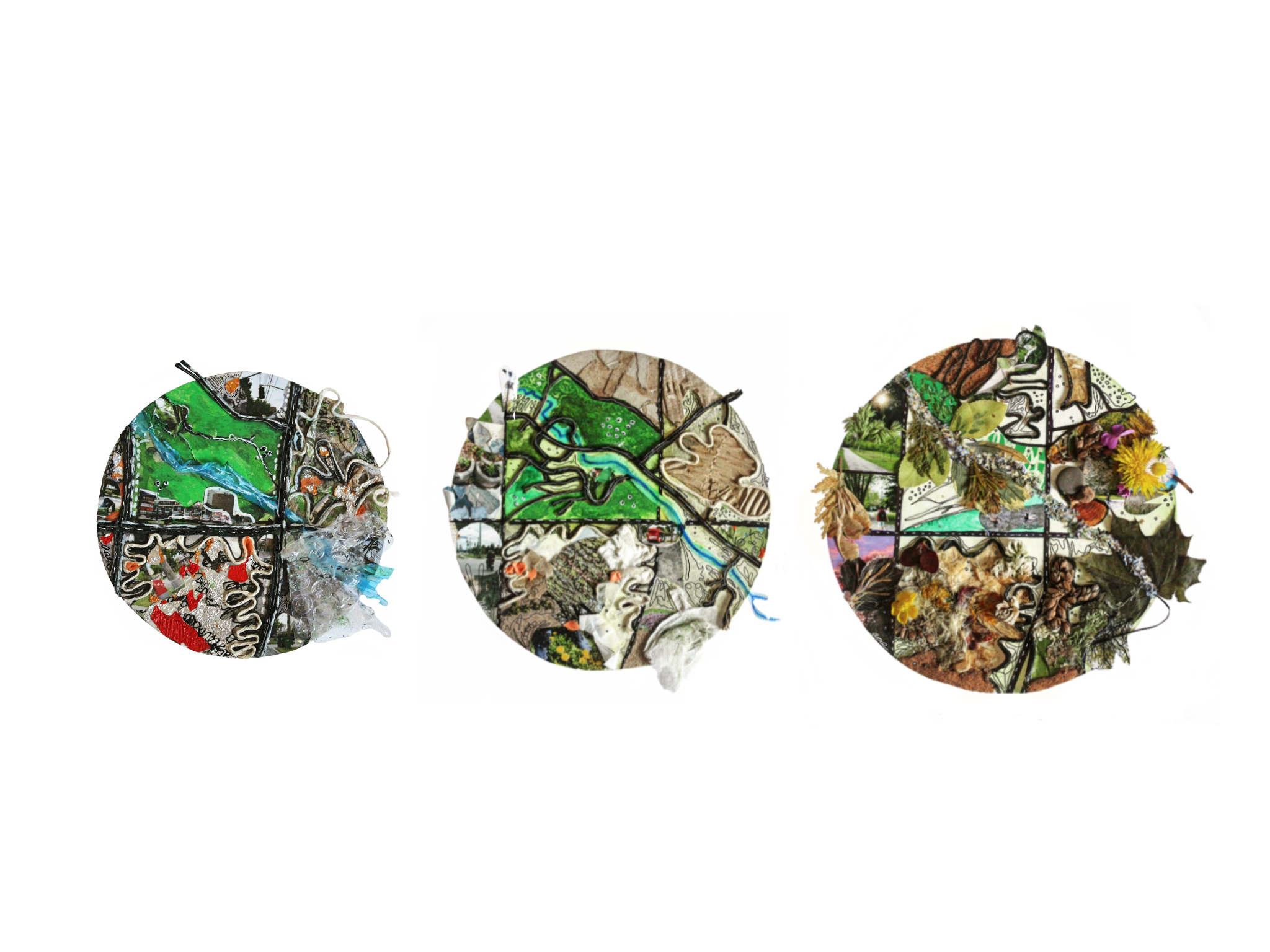

ARTIST STATEMENT
This Place: Now, Then, Reimagined is a site-specific, mixed media series that responds to the Moving the Needle campaign using the Bendale neighbourhood in Scarborough, Ontario as a space of inquiry.
The compositions are loosely based on an aerial map of Scarborough’s Bendale neighbourhood; this neighbourhood is one of Toronto’s suburban regions defined by its mix of green and urban spaces. Each composition draws attention to the different “lines” that define our waking lives. The first piece is grounded by a set of road lines, the second by a set of cycling paths, and the third by a series of walking paths and lots zoned for housing. The compositions progressively become less defined by man-made lines and objects such as candy wrappers and clips of corrugated cardboard, and more defined by ephemeral lines, objects, and experiences, like pressed forget-me-not flowers and photographs of sunsets. This transition highlights how our individual actions physically impact the land around us, drawing attention to our interdependent relationship with one another.
The land sustains us as humans through not only providing for our needs, but gifting us with a complexity of sites, sounds, smells, tastes and textures to behold. To ensure that this land is here and healthy for many generations to come, this work acts as a call to rewrite the stories that define our lives in the present to accelerate our path towards a low-carbon Canada. This Place: Now, Then, Reimagined is a jumping off point for us to deeply consider who we are in the world and how we are related to the idea of place itself. Who are we if we are not defined in relation to where we are now, and where we have been?
ABOUT THE ARTIST
As a millennial, Sylvie is constantly looking for ways to work through the duality of her lived experience—growing up in both the “digital” world and the “physical” realm, but not feeling completely “at home” in either one. Her work explores the “grey” space between both domains. She creates out of necessity—to ground herself in the present moment, and remind herself to look beyond the virtual world, back to the physical realm. Sylvie primarily creates her work using a systematic process, called “automatism,” or “automatic drawing.” Through relinquishing conscious thought and entering into a deeply meditative state, the base of her work takes on a fluid visual quality. Sylvie’s pattern-based practice challenges people to confront their relationship with the “digital” world and the “physical” realm. It asks people to reimagine the world with a child-like sense of wonder, and see it as a series of realms to play in, converse in, question, and explore.
Funded by Environment Funders Canada (formerly Canadian Environmental Grantmakers’ Network)


